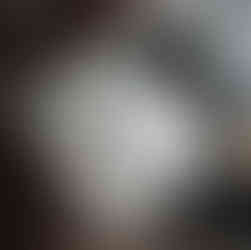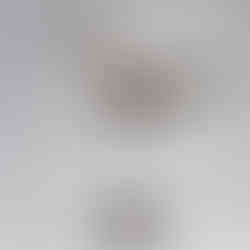by Nancy Rose Taplin

It is rare for any gallery to be able to exhibit the work of two generations of artists at the same time, and rarer still for those artists to be Mother, Father and Daughter. Throughout February, at our gallery in St. James's , we are exhibiting the work of Guy Taplin, whose iconic bird sculptures sit 'wing to wing' in our upper and lower galleries. On the walls are the fine and elegant paintings of Nancy Rose Taplin, which demonstrate both her love of ornithology - undeniably inherited from her father - as well as her penchant for old and preloved books and manuscripts. This exhibition follows in the wake of Robina Jacks near sell out show held with the gallery in November, however two of her works still remain to represent mother and wife in this extraordinary presentation. Extraordinary is the right word to use in relation to this family of creatives, who all live together in their homes and studios in Wivenhoe.
Here, Nancy describes home life and the perks and pitfalls of three artists living together, sharing ideas and enjoying life on the Suffolk coast. Nancy's words are joined by photography by Michael Branthwaite.
Long summer days at the Chalet, our affectionate name for the coastal outpost my father, the sculptor Guy Taplin, uses as a studio, were a formative part of my childhood. Perched on stilts, exposed to the elements and on the unprotected side of the sea wall, the Chalet has a beautiful sense of precariousness to it. Bigger tides would wash beneath its rickety floors, after which we’d spend hours combing the windswept beach for the spoils. Sometimes we’d stay the night there, my brother and I nestled into sandy sleeping bags, the smell of creek mud and smoke on our skin, listening to the calls of curlews and the intermittent hum of the kitchen’s ancient fridge as we drifted off to sleep.
Back home in Wivenhoe, twenty minutes drive from the Chalet, we lived with our artist parents in a cottage built for a sea captain in the 1860s. To this day, the house is crammed to the gunwales with a mix of furniture from the Oxfordshire farm where my mother, the ceramicist Robina Jack, grew up and my father’s collections of avian taxidermy and maritime artefacts. When the surrounding trees are stripped bare of their leaves, glimpses of the mudflats that mark the river’s mergence with the sea are visible through the upper floors’ drafty sash windows. Inevitably, the sense of intimacy with coast and countryside that informs my parent’s work, has also taken root in me.
I’m often struck by the tidal nature of life, and know from experience the strength of the current that has repeatedly pulled me back to the estuary in which I spent my first decades. Now in my forties, an artist myself with a daughter of my own, I’ve returned to the village in which I was raised. The garden of my house backs onto that of my childhood home, and my parents and I work from studios scattered across the two properties, convening regularly to discuss our work over meals.
I paint in the loft of my house, with a sprawling view of our gardens. My arrival, two years ago, with an energetic toddler in tow, threw my parents’ long-established routines into chaos, but since then we’ve reached a renewed sense of equilibrium. From my attic eyrie I’m able to see the comings and goings of my parents as they move through their working days. Robina intermittently emerges from her studio to throw a ball for our waiting terriers or to pull up a few of the weeds that constantly threaten to overtake the vegetable patch, whilst Guy can be seen assembling huge wall pieces, dodging the loitering dogs whilst carefully creating the perfect dance between curved beaks and outstretched wings.
Robina’s studio is a work of art in itself, a black-boarded structure with a red tin roof and arched windows salvaged from a lodge she and my father happened to pass just as it was being pulled down. Trained as a stained glass artist, she switched to ceramics in her sixties and is now known as a maker of colourful dishes populated by a nostalgic menagerie of animals, each bordered by a pattern of fabric-inspired motifs. Our kitchens are well stocked with her seconds, and the process of serving food slowly reveals their just-slightly blemished subjects: a self-important guinea fowl one day, a doleful greyhound the next.
Returning in adulthood to the place in which I grew up has created a throughline with the noises and smells of my youth. The path that leads from my father’s studio to their house is gravel (although if you look closely you might catch a glimpse of any manner of discarded relic, from extracted teeth to the shards of once-loved cups). The sound of him crunching down it before putting up clouds of wood dust as he shakes out his clothes by the kitchen door is one I’ve been hearing since his workshop was built in my teens. This morning he came in smelling of the wax he’s always used to finish his birds, and I realised that in my life’s library of scents, this was amongst the most evocative of him.
Every surface of the two storey sail loft Guy uses as a workspace is mantled in sawdust. The dramatic winged forms of his sculptures jostle against the eclectic array of curios he’s collected all his life. Wanted posters liberated during his decoy hunting expeditions in America sit side by side with a hologram of a weeping Jesus and a faded family photo found in a derelict house. His ability to create such fragile beauty in an environment so seemingly chaotic is perhaps due to the embodied awareness he learned during the zen training he received in his thirties. It was during this period that he also began sculpting birds and I’ve always found his pieces to have a meditative quality, even in their sometimes vivid evocations of movement.
Perhaps it’s no surprise then that over the years I’ve developed a style of painting so detailed I enter an almost trance-like state when working. Like my parents, I’m continually drawn back to birds’ delicate grace, and it seems fitting that when I periodically look up from such close work it’s often to see a feathered silhouette flit past my window. The battered paper ephemera I use as canvases is made fragile by age, and like birds themselves suggestive of both transience and timelessness. The marks left by human hands are almost topographical, maps of years of use and misuse charted in fingerprints, foxing, inkblots and folds.
When in 2012 my brother, Sam, also a sculptor, tragically died in our family home, a friend asked whether it meant we’d have to leave the house, no longer able to live in a place that held such a sad memory. The answer was an emphatic “no.” Our two houses and the Chalet are pages on which we’ve written the story of our years together, a story that continues to unfurl as we work, rest and raise my daughter here. Taking place as it does in an estuary, I’m again reminded of the tidal nature of existence, its fluctuating patterns of sadness and joy, the ebbs and flows that characterise family life. Every day here is a continuance of routines rich in their simplicity and supportive of the creativity on which all our work depends.
Text copyright Nancy Rose Taplin 2023
Images copyright Michael Branthwaite Photography
Full lists of available works by Guy Taplin, Nancy Rose Taplin and Robina Jack are available online, or enquire at our gallery in St. James's






























Comments